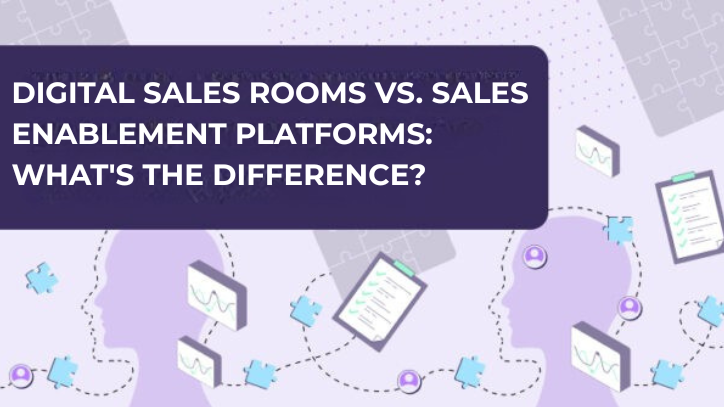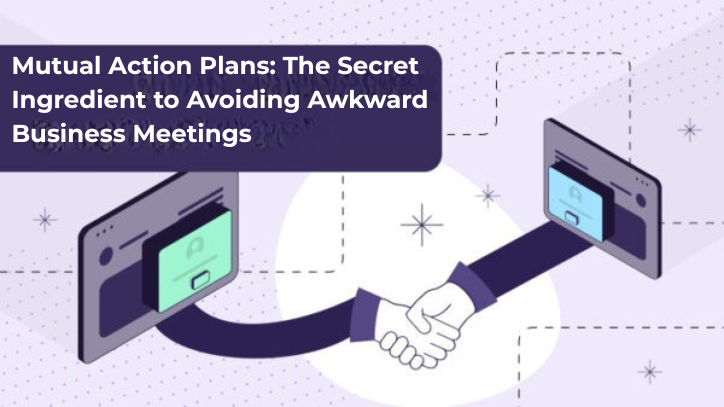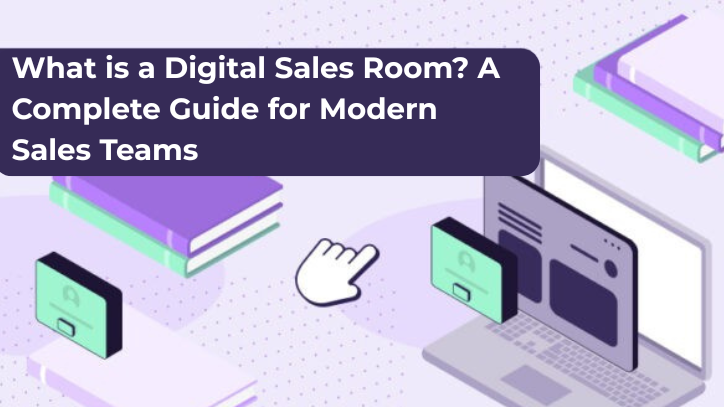Updated January 10, 2024.
Any marketer knows just how important lead generation is.
But what about the process of nurturing leads?
To succeed in today’s market, your inbound marketing strategy needs to be on-point. This means you have to figure out a way to attract new customers by tailor-making a content marketing experience that relates to them and solves their problems.
That being said, there’s a huge difference between generating leads and closing deals.
Knowing that it takes about 10 marketing-driven touchpoints for a lead to convert, you also need to invest in lead nurturing. When done right, it has the power to boost your customer loyalty levels, retention levels, revenue, and so much more.
In fact, businesses that are experts at nurturing leads generate 50% more sales at a 33% lower cost than non-nurtured prospects.
So, how can you nurture leads like a pro? Read on to learn more about what it means to nurture leads and the best practices you need to follow.
Just let us lead the way.
What is lead nurturing?
It’s important to note that according to Marketo, on average, 50% of your leads will not be ready to make a purchase right off the bat.
So, this means in order to get prospects interested and willing to commit, you’ll need to prove your value. And that’s where lead nurturing comes into play.
When we talk about lead nurturing, we are referring to the process of establishing a relationship with your leads that aren’t quite ready to buy your product yet.
As one of the key focal points for any new or old business, lead nurturing involves maintenance at every step of the sales funnel or buyer’s journey.
This is done by offering your target audience relevant information that they will find interesting, personal, and helpful. Different content can be sent to leads based on their title, role, industry, decision-making power, and where they are in the buying process. This content can be anything from eBooks and webinars to interactive product demos.
When done right, lead nurturing can help you drive strong loyalty to your brand even before the prospect is ready to take the plunge and buy your product.
Why is lead nurturing important?
Every marketer is interested in generating as many leads as possible.
But it’s not enough to just generate leads.
Lead nurturing is important for B2B marketing because customers need time to educate themselves prior to making a decision to buy a product. And lead nurturing is all about giving buyers the information they need to feel confident in making a purchase.
That being said, with so many options laid out before them, there’s a good chance that your potential customers are feeling overwhelmed. This means you can’t afford to bombard them with too many choices since this can lead to fewer sales.
Lead nurturing is there to relieve your consumers from their worries, address their concerns, and provide them with the information they need at that moment. This means you’ll need to earn their attention and stand out from the crowd if you want them to make it to the finishing line.
Lead nurturing is a way for you to share your knowledge and build (paying) relationships between you and your potential consumers. It allows you to engage with your customers and make them feel good about their buying decision.
It is also a crucial method that will determine your business’ success and bottom line since it drives 20% more sales opportunities than non-nurtured leads, according to Marketo, and can do wonders to your ROI (return-on-investment).
Nurturing leads can also help you make more money on bigger purchases from your targeted consumers.
In fact, nurturing leads can reduce customer acquisition cost (CAC) and increase average order value (AOV), according to Databox.
When does lead nurturing take place?
There’s no one time during the buying journey that lead nurturing needs to take place. While lead nurturing begins in the marketing phase, to be successful, lead nurturing should be taking place throughout the entire sales funnel.
Let’s get into a little bit more detail about the steps involved with lead nurturing and what lead nurturing looks like at each stage of the sales funnel.
Top of the funnel lead generation
At the top of the funnel, you may meet the potential consumers that you’ll try to turn into loyal consumers.
These potential customers come as the result of your lead generation efforts. They have demonstrated some interest in learning more about your product by downloading some piece of content or filling out a form.
At this point, your lead still doesn’t really know your company or what it is you’re offering but they are interested and open to receiving marketing content.
That being said, it is most likely too soon for your sales team to reach out to them. This is because one of the biggest mistakes you can make is being too aggressive with your communications at the beginning.
Middle of the funnel validation
As buyers go down the funnel, some of them will start to engage with you and in turn, become leads that could potentially purchase your software.
But how do you know which leads are really serious about buying and which will never take the plunge and purchase your product? Well, that’s why it’s critical to qualify your leads.
To successfully qualify your leads, you’ll need to consider several factors like the prospect’s budget, needs, and their role and authority within the company. It’s also essential to understand your buyer’s level of intent.
If you’re using an interactive demo platform (like Walnut), you can track how prospects viewed your interactive demos to understand which parts of your product were interesting for them and what was less relevant. And having this information can go a long way in boosting your lead qualification efforts.
Middle of the funnel engagement
Once you’ve qualified your leads, your sales team should reach out and try to continue a conversation.
This can be done through a discovery call, sharing content to further educate the lead on your product, or sending an interactive product demo.
Bottom of the funnel conversion stage
In the more advanced stages of the funnel, this is where you need to get the prospect to pull the trigger and make a decision to purchase the product.
Based on their individual needs, you need to consistently share compelling and relevant content. This content should take into account that they already have knowledge about your product and brand, and should be more focused on the value they can gain.
This content could be testimonials, reviews, webinars, or case studies that highlight the value customers were able to gain from using your product.
Optimizing the lead nurturing process
This is basically the cornerstone to a strong lead nurturing system.
You will need to collect the relevant data about the potential buyer, when they last engaged with the brand, what content they’re interested in, and more, so that you can learn which lead nurturing strategies worked and where you still need to make some improvements.
This will help you ensure that you are constantly adjusting your lead nurturing approach and are shifting based on your audience’s evolving needs.
How to successfully nurture leads
In order to create an effective lead nurturing strategy, it’s essential to follow the lead nurturing best practices:
1. Set a goal and a timeline
First and foremost, it’s critical that you discuss with your sales and marketing teams what it is that you are trying to achieve by creating a lead nurturing strategy.
Are you trying to increase your consumer quality, get in touch with old leads, or discover new ones? Once you’ve figured out what your goal is, determine how long it will take you to reach it.
Take into account that 75% of leads buy within 18-24 months, so you’re going to have to be patient and not try to rush them into completing a sale. This also means you shouldn’t email them every single day.
Then, you want to establish timelines for milestones you’d like to achieve to keep your team on track and make it easier to measure your progress.
2. Make it personal
Once you have a better understanding of what you’re trying to achieve, then you can start to think about how to personalize the buying experience for your prospects.
With the highest ROI in the business from 3,800% to 4,200%, email marketing continues to be one of the best ways for reaching out to new leads and making conversions, i.e. converting leads into sales. Unlike social media channels, when it comes to your email marketing strategy, your email subscribers are your own.
Meanwhile, creating landing pages that are meant to convert newsletter subscribers into loyal customers can help you create a buzz around the launch of an upcoming product or service.
More so, take into account that 41% of consumers will stop engaging with a business due to a lack of personalization.
So, by personalizing each email to the interests of your leads and prospects, including their names or demographics, you can make a real difference.
3. Take it one step further
If you really want to take your personalized lead nurturing strategy one step further, you’ll need to personally interact face-to-face with your leads.
These interactions can include meet-ups with leads and social media connections. They should be left to your company’s Sales Development Reps (SDRs) rather than being tossed around back and forth between the different marketing and sales departments.
4. Create targeted content
Create content that your specific targeted audience will find relevant.
This means you’ll have to research your buyer personas and tailor your content based on their interests, desires, objectives, drives according to data from analytics software, social media feedback and information, keyword research, and more.
By creating a content marketing strategy focused on your target audience’s pain points, you’re more likely to appeal to them so that they will turn into loyal consumers that you can nurture.
5. Make the process automated
When leads engage with your content, you can divide leads into segments using lists and categorize them by problems they need to solve.
This should be done using an automatic process so that you’re able to reach out to your target audience with relevant information at specific times that will best suit them.
6. Score and grade your leads
Consider ranking your leads through a lead scoring method to determine whether they are willing and ready to buy from you. Marketing automation software will enable you to know where exactly your lead is in the sales cycle so that you can adjust the content you send out to them accordingly.
Grading and ranking leads helps you know when they’ve reached a specific threshold suggesting that they are ready to buy.
7. Communicate consistently and retarget your audience
Interact with your leads on a regular basis through digital platforms to ensure you’re targeting them with the right type of content.
If you find that for whatever reason a lead seems to have hit the snooze button and isn’t engaging with you as often as they used to, re-engage.
Ask them for feedback via email, offer them an incentive with a product or service you know they’ll find interesting and relevant, and don’t hesitate to create a sense of urgency and FOMO around the whole thing.
8. Map your customers’ journey
Not only do you need to know your target audience, but you also need to understand the way they do business.
By outlining the stages they go through on your customer journey map, you’ll receive priceless intel into their mindset and what drives them through your B2B sales funnel.
Taking into account that each person responds to different content materials and that buyers want different content at each stage of their research, make sure to create as much relevant content for each stage of your consumer’s journey as you can.
This can include blog posts, infographics, emails, videos, case studies, success stories, white papers, landing pages, and more.
By gaining insight into the way potential buyers think and act during their interaction with your brand, you’ll be able to deliver better content that relates to their specific needs and wants.
9. Work with different platforms
Lead nurturing isn’t just about sending personalized emails to a list of prospects.
In order to reach as many leads and nurture your relationship with them, you’ll need to look at new technologies and marketing tactics that can up your game.
By using automation platforms, social media platforms, paid media, direct sales outreach and ever-changing content, you’ll be able to cultivate your leads.
10. Measure the data
Don’t simply create a lead nurturing strategy and think it’ll work out on its own.
You’ll need to continually make sure that it is improving and that it is helping you reach the goals you set.
In order to do that, keep looking at your metrics and measure your website’s traffic, how long prospects are staying on your site, and who is actually converting. No matter the results, there’s always room to grow and improve your strategy.
The most effective lead nurturing strategies for 2024
Here are the most effective lead nurturing strategies that you should use to boost your GTM motion in 2024:
1. Drip campaigns
One strategy that GTM teams can use to nurture leads is using a drip campaign, which is an automated series of emails that can be sent to leads to get them to perform a specific action.
What’s great about drip campaigns is you can choose how many emails to send and how often to send them. They’re also emails that can be super personalized and targeted, and sent as a response to an action your lead took, based on an engagement point, or when their engagement levels have decreased.
By communicating your product’s value using drip campaigns, you can build the relationship with your leads, increase their education about your solution, and re-engage them.
2. Including interactive demos in emails and on your website
When you use an interactive demo platform (like Walnut), you can share your interactive product demos with your prospects by email or through links.
Some demo platforms even allow you to embed a demo directly on your website.
This saves prospects from having to wait until the demo call to get an idea of what your product can do. And by letting your prospects try your product at any point during the sales cycle, it enables you to not only limit friction with buyers, but also goes a long way in boosting your lead nurturing efforts.
3. Surveys
Another strategy that we recommend is to send your leads surveys.
This allows you to collect data on your individual leads. When you have this data, you’ll be able to ensure that your leads are not only approached in the right way, but that the content that you’ll share with them is relevant for their needs.
This will make it easier for you to tailor the lead nurturing process and offer a more personalized buying experience.
4. Face-to-face meetings
Never underestimate the power of a face-to-face conversation when it comes to lead nurturing.
While automated drip campaigns or personalized emails can be powerful lead nurturing tools, sometimes prospects also need face-to-face interactions.
With this in mind, we recommend connecting with leads through your social media networks and scheduling in-person meetings from time to time.
The future of lead nurturing involves interactive product demos
When it comes to nurturing leads, first impressions are crucial. After all, people spend an average of 15 seconds on a website before they leave it, meaning you don’t get a lot of time to impress them with your product or service.
That’s why sending an interactive demo to your prospective leads can help nurture them into loyal consumers.
If you are using an interactive demo platform (like Walnut), it’s easy to create interactive and personalized product demos that include your lead’s logo, name, figures, numbers, and of course, features to help get your potential consumers acquainted and interested in your product and understand why it’s the best solution to all their pain points.
These kinds of platforms provide all the data and insights you’ll need about the ways in which your demo performed, so that you can reach your goals and close the deal.
When it comes down to it, lead nurturing is all about cultivating relationships that will last, which means your potential consumer should be your number one priority in regards to your strategy rather than your product or goal.
After all, once you show them just how you can solve their problems with your service and product, they’ll be hooked.
To start boosting your lead nurturing strategy, click the “Get started” button.





